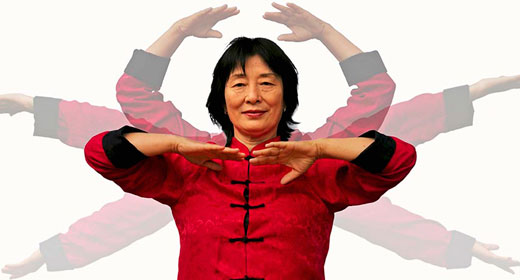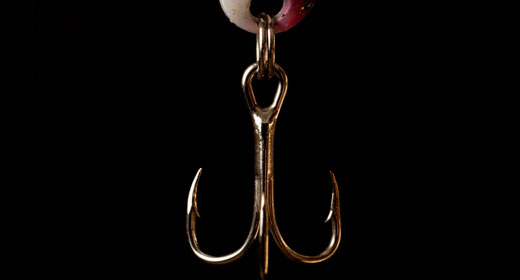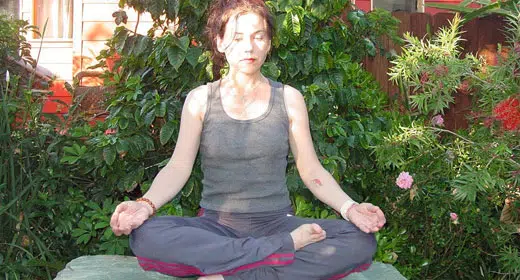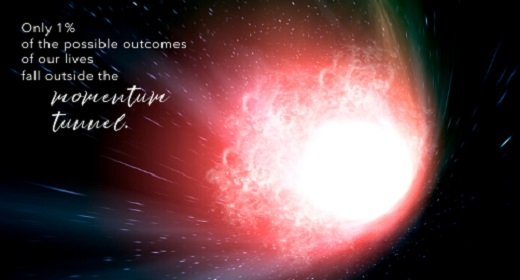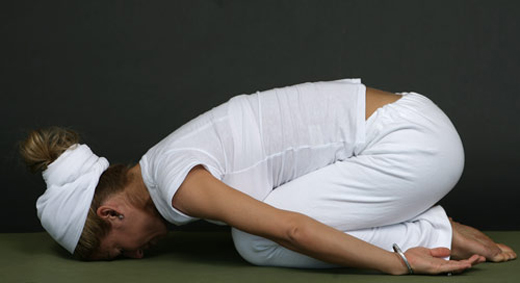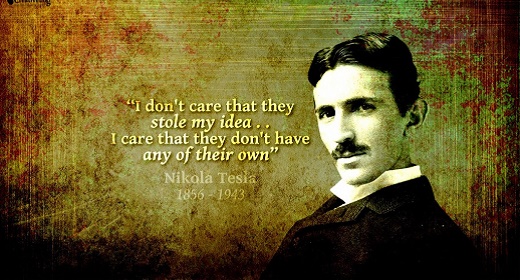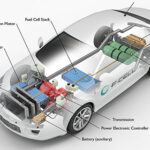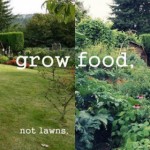by Dr. Stanley Krippner Ph.D., and Michael Bova: Maimonides Dream Laboratory, Brooklyn, NY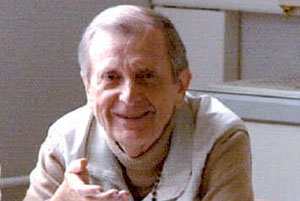 Observations of “trance” mediums as well as investigation of spontaneous case material (e.g. dreams) has suggested a relationship between certain altered conscious states and psi phenomena (Honorton, 1970). Ludwig (1966) has defined an altered state of consciousness (ASC) as any mental state “which can be recognized subjectively …or by an objective observer … as representing a sufficient deviation in subjective experience or psychological functioning from certain general norms for that individual during alert, waking consciousness…” Ludwig (1966) notes that environmental manipulation is one of several procedures which may alter consciousness through its effects on exteroceptive stimulation. ASCs have been measured by Ludwig by means of an adaptation of the Linton-Langs Questionnaire (Linton & Langs, 1964; Ludwig, Levine, & Stark, 1971), an instrument containing items which represent changes in consciousness (e.g. “Have things felt unreal as if you were in a dream?”).
Observations of “trance” mediums as well as investigation of spontaneous case material (e.g. dreams) has suggested a relationship between certain altered conscious states and psi phenomena (Honorton, 1970). Ludwig (1966) has defined an altered state of consciousness (ASC) as any mental state “which can be recognized subjectively …or by an objective observer … as representing a sufficient deviation in subjective experience or psychological functioning from certain general norms for that individual during alert, waking consciousness…” Ludwig (1966) notes that environmental manipulation is one of several procedures which may alter consciousness through its effects on exteroceptive stimulation. ASCs have been measured by Ludwig by means of an adaptation of the Linton-Langs Questionnaire (Linton & Langs, 1964; Ludwig, Levine, & Stark, 1971), an instrument containing items which represent changes in consciousness (e.g. “Have things felt unreal as if you were in a dream?”).
Tart (1970) has developed a self report scale so that subjects (Ss) may assess their change in consciousness at any time during an experimental session and inform the experimenter (E). High state reports (denoting greater alterations in consciousness) have been found to relate to clairvoyance in a brain-wave biofeedback experiment (Honorton, Davidson, & Bindler, 1971) as well as one involving hypnotic dreams (Honorton, 1972).
PROBLEM
It was decided to explore the effects of various environments on state reports and ESP. Specifically, it was hypothesized that significant results would be obtained from A) trials associated with high scores on the Linton-Langs Questionnaire, and B) trials characterized by high state reports. It was decided to inspect the state in each of the three environmental conditions.
SUBJECTS
Fifty unpaid volunteers (26 males, 24 females) served as Ss for this study. These individuals were selected from S waiting lists at the Maimonides Laboratory or were recruited by Es. All Ss had expressed either a positive or a neutral attitude towards the existence of psi phenomena.
DESCRIPTION OF ENVIRONMENTS
The studio of Aleksandra Kasuba, an artist, was used as the location for all experimental settings. Kasuba’s “Writing Shelter” to alter Ss consciousness consists of a wooden chair and a plain table with a tapestry over it. One of the adjoining walls is of curved white nylon, while the other two are painted dark gray.
Kasuba’s “Group Shelter” is a conical structure, the shape of which converges to a mirror mounted on the ceiling. There are no other furnishings inside but a tasseled deep pile of rug of green, purple, gold and blue, which is spread over a floor of small hill-like ridges. A white globe on the rug diffuses light throughout the area.
A narrow ramp leads up into “The Sensory” which is a spiral rising to a tall and hollow column of white stretched nylon. Inside the floor area is a mirror, on which a hand sized glass ball is placed. A light source around the perimeter of the mirror completes the interior.
Emanuel Ghent’s electronic, computer-generated music was played at low volume and could be heard in “The Sensory” and “The Group Shelter.”
TARGET MATERIALS
Postcard-size reproductions of famous paintings were used as ESP targets for this study. To create pools of target materials with somewhat equivalent content, E1 inspected over 100 art prints from local museums and art supply stores. She evaluated these materials on the following scale: A) “simplicity”: 1) very simple, 2) fairly simple, 3) complex; B)”emotionality”: 1) generates great emotional feeling, 2) generates some emotional feeling, 3) generates little or no emotional feeling; C) “vividness”: 1) very colorful and vivid, 2) fairly colorful and vivid, 3) lacking vividness.
Following EI’s evaluation, EII inspected the art prints, eliminating all prints which received one or more rating of “3.” He then selected four of these art prints for the target pool. The prints were selected to differ thematically one from the other and included: A) “The duelers” by Goya, portraying two men fighting with swords; B) “Lily and the Sparrows” by Evergood, depicting a girl feeding birds; C) “Witch doctor” by Cotlow, portraying a masked individual in a jungle setting, and D) “Battaglia” by Borra, which shows a large number of men on horseback.
Each art print was placed into a small opaque envelope which was sealed and placed in a large opaque envelope which was also sealed. Duplicate copies of the four art prints were set aside for judging purposes.
EXPERIMENTAL PROCEDURE: TARGET SELECTION
All experimental sessions were run by E 111 in the Kasuba studio. Three Ss were run at one time; each S’s experimental session consisted of three trials.
E III had prepared three cards on which were printed the numbers 123, 231 or 312, these numerals referred to the three environments previously described.
Upon each S’s arrival at the studio, E blindly pointed to a five-digit number in a random number table, added and re-added the numeral until a one-digit number was obtained, and counted down a stack of cards one or more times until locating the card which matched the one-digit number. The card was used to determine the order in which each S would enter the designated environment.
Next, E III turned to four cards contained the letters A, B, C and D; these letters referred to the four targets.
A similar procedure was used to obtain a one-digit number which was used to determine the target for each S’s first trial. Similar procedures were used to determine the targets for each S’s latter trials.
S was given the randomly selected envelope upon entering an environment. He spent 15 minutes in the environment, and then wrote his guess as to the target’s identity on a sheet of paper. He was allowed to draw a picture of his guess if he desired. As three Ss were tested at one time, all three environments were in use during the experimental session.
EXPERIMENTAL PROCEDURE: INSTRUMENTS
Upon arrival at the Kasuba studio, each S was individually told about the state report scale:
| During the course of this experiment, we will be interested in the degree to which your state of mind stays the same or changes. That is, at various times, we are going to want to know what state of mind you are in. In order to make it easy and convenient for you to tell me this, I am going to teach you a rating scale. This way, when you are asked “State?” you will just call out a number to indicate your state of mind, instead of having to explain it.
Here is what the numbers are to represent: “Zero” indicates that you are normally alert, just as you are now. “One” indicates that you feel especially relaxed. In this state you may feel more at ease, and the tension in your muscles may yield to a more peaceful state. Do you know what I mean? “Two” indicates that your attention is being focused more on internal feelings and sensations. This may be associated with a shift from your surrounding environment to your internal bodily feelings. If this shift is not only recognizable but strong, you should report “three”, and if it is strong and very impressive to you, report “four”. A report of four indicates that you feel more or less oblivious to your external surroundings (Pause.) Do you get the idea? O.K. Now, whenever I ask “State?” you should call out the first number that pops into your mind. We’ve found this generally to be more accurate than if you stop and think about what the number should be. Of course, if you feel that the number you’ve called out is way off, you may call out a correction. It is important that your state reports reflect, as accurately as possible, your internal state. |
At this point, S was asked for a state report and was also asked if he had any questions about the scale.
This was followed by the presentation of a modified version of the Linton-Langs Questionnaire (Ludwig, Levine, & Stark, 1971). The form consists of 68 questions which have been found, through factor analysis techniques, to produce the following categories of ASC reaction:
Factor I: Changes in somatic reactions
Factor II: Changes in meaning
Factor III: Changes in vision
Factor IV: New insights
Factor V: Loss of control of body and/or self
Factor VI: Increased sensory perception
Factor VII: Increased happiness
Factor VIII: Synesthesia
Factor IX: Impaired thinking
Factor X: Unpleasant reactions
Factor XI: Loss of control of feelings and/or emotions
S completed a questionnaire so that he would be familiar with the type of questions asked.
Immediately after the completion of the 15 minutes spent in each condition, and the completion of S’s guess as to the identity of the target, he was asked for a state report. He was also asked to complete a questionnaire. If S said that he no longer felt the degrees of consciousness-alteration that he did when first exposed to the environment, he was told to give a state report or answer questionnaire items to reflect the highest degree of altered consciousness he felt during that particular trial.
PROCEDURE: SUBJECT EVALUATION
Once all three trials had been completed, S was given a duplicate target pool and three evaluation forms which stated:
- Examine all four targets. Remember that the title and the artist may be perceived as well as the picture and the design.
- Rank all four targets against your report. Place the picture which most resembles your report at rank #1 on this sheet. Place the target which least resembles your report at rank #4.
- When you are finished, there should be a target associated with each rank. However, there should be no ties.
S filled out a different evaluation form for each trial. All correct ranks of #1 and #2 were considered “hits” while ranks of #3 and #4 were considered “misses.” Thus, there was a constant probability of .50 for an ESP “hit.”
RESULTS: QUESTIONNAIRE
It had been hypothesized that significant ESP data would be obtained from trials associated with both high questionnaire scores and high state reports.
For the questionnaire, the mean of each factor in each environment was computed; scores falling at or above the mean were designated high scores while those falling below were designated low scores. Table 1 presents the data emerging when high and low scores are compared regarding ESP hits in the three environments.
The hypothesis was confirmed in four instances. Significant results favoring an ASC (as measured by high scores on the Linton-Langs Questionnaire) were obtained for the Group Shelter (Factors III and VI), for the Sensory environment (Factor I), and for the Writing Shelter (Factor X).
For the Writing Shelter, low scores on the questionnaire were associated with ESP hits in one instance. For Factor I, low state reports produced 17 hits (out of 29 low report trials) as opposed to 11 hits (out of 20 high report trials). This finding contradicts the stated hypothesis.
RESULTS: STATE REPORTS
For the 50 trials conducted in the Writing Shelter, the mean state report was 1.50, therefore, all reports below the mean (e.g. “2”, “3”, and “4”) were designated high state reports.
For the 50 trials conducted in the Group Shelter the mean report was 2.32. For the trials associated with the Sensory environment, the mean report was 2.14. Therefore, for these two conditions, all reports below the means (e.g. “0”, “1”, and “2”) were designated low state reports while those above the means (e.g. “3” and “4”) were identified as high reports.
Table 2 presents the date emerging when high and low state reports are compared regarding ESP hits in these three environments.
On a “post-hoc” basis, data from the latter two conditions were combined, as the mean state reports suggested that an ASC was produced in most Ss by both the Group Shelter and the Sensory environment. There were 27 hits and 13 misses in high state report trials, while 24 hits and 36 misses were associated with low state report trials
(X2 = 7.26, p<.01, 1 d.f.).
TABLE 1
ESP Hits vs. Misses and Linton-Langs Questionnaire Factors in Three Environments
Factor High State Reports Low State Reports
Hits Misses Hits Misses X2
| I
Writing Shelter Group Shelter The Sensory |
11 14 13 |
10 11 7 |
17 13 11 |
12 12 19 |
4.23* 0.08 3.86 |
| II
Writing Shelter Group Shelter The Sensory |
14 13 8 |
12 6 11 |
14 14 16 |
10 17 15 |
0.10 2.57 0.43 |
| III
Writing Shelter Group Shelter The Sensory |
10 18 9 |
12 8 9 |
18 9 15 |
10 15 17 |
1.78 5.06* 0.05 |
| IV
Writing Shelter Group Shelter The Sensory |
7 14 9 |
11 10 16 |
21 13 15 |
11 13 10 |
3.34 0.35 2.88 |
| V
Writing Shelter Group Shelter The Sensory |
6 13 9 |
6 10 10 |
22 14 15 |
16 13 16 |
0.23 0.11 0.01 |
| VI
Writing Shelter Group Shelter The Sensory |
5 5 8 |
7 12 7 |
23 20 16 |
15 13 19 |
1.32 4.37* 0.24 |
| VII
Writing Shelter Group Shelter The Sensory |
10 12 11 |
5 11 13 |
18 15 13 |
17 12 13 |
0.99 0.04 0.09 |
| VIII
Writing Shelter Group Shelter The Sensory |
8 15 8 |
12 13 9 |
20 12 16 |
10 10 17 |
3.46 0.01 0.01 |
Factor High State Reports Low State Reports
Hits Misses Hits Misses X2
| IX
Writing Shelter Group Shelter The Sensory |
15 13 8 |
11 10 8 |
14 14 16 |
10 13 18 |
0.01 0.11 0.04 |
| X
Writing Shelter Group Shelter The Sensory |
17 8 14 |
6 6 17 |
12 20 10 |
15 16 9 |
4.43* 0.01 2.28 |
| XI
Writing Shelter Group Shelter The Sensory |
12 19 8 |
11 13 10 |
16 8 16 |
11 10 16 |
0.25 1.03 0.14 |
| Total
Writing Shelter Group Shelter The Sensory |
10 13 14 |
9 19 8 |
18 11 13 |
13 17 15 |
0.14 1.93 1.46 |
TABLE 2
ESP Hits vs. Misses and State of Consciousness Reports in Three Environments
Environment and High State Reports Low State Reports X2
Mean State Report Hits Misses Hits Misses 1 d. f.
| Writing Shelter
(Mean: 1.50) |
11 | 14 | 17 | 8 | 2.92 |
| Group Shelter
(Mean: 2.32) |
14 | 6 | 13 | 17 | 3.44 n.s. |
| The Sensory
(Mean: 2.14) |
13 | 7 | 11 | 19 | 3.85
p< .05 |
EXAMPLE
S F. P. was randomly assigned to the target “Lily and the Sparrows”, during her trial period in the “Group Shelter” environment. The target depicts a girl at the window sill of a red brick building. There is a tree off to one side of the picture, and there are sparrows flying to the girl. The dominant color is the red from the building. S’s response was:
| A red brick house in the country. A little old lady putting pies on the window sill to cool. Some animals like police dogs are smelling the pies. There were some trees but the color I feel most is red… there is something about this target that is frightening me.
The S gave a state report of “3” for the session. |
DISCUSSION
The environments used in this study appeared to have differential effects on ESP, especially in interaction with ASCs.
However, the relation appears to be a complex one. The two environments which most altered consciousness produced clear-cut results linking high state report trials to ESP. However, the environment which least altered consciousness produced no such data; indeed, there were twice as many in high state report trials. Might it be that a facilitating environment is needed for ASCs to foster ESP?
Additional information comes from an examination of the Linton-Langs Questionnaire results. For Factor I, ASCs in the writing Shelter were associated with more ESP misses than hits. Factor 1”s questions deal with somatic changes (e.g., “Have you had any dizziness or grogginess?” “Have you had any numbness or tingling?”). The same questions were associated with ESP hits in the Sensory environment where, perhaps, they were easily integrated into the consciousness-altering effects of the mirror and stretch nylon, while at the desk, however, the same characteristics may have felt uncomfortable, thus decreasing ESP.
On the other hand, ASCs on Factor X were linked with ESP hits in the Writing Shelter. This factor involves reactions that usually are regarded as unpleasant (e.g. “Has time been passing slower than usual?” “Have you felt angry or annoyed?”). Perhaps Ss were able to cope with these types of conscious-altering feelings rather easily in an ordinary environment; being able to fully sense these annoyances may have opened the individual to ESP perceptions as well. In any event, the different findings on Factors I and X by Ss in the Writing Shelter may provide an important clue as to how ESP can be facilitated in ordinary environments in which ASC-producing techniques and materials are absent.
While in the Group Shelter, Ss attained significant numbers of ESP hits in association with high scores on Factors III and VI. Factor III contains items reflecting changes in vision (e.g. “Are you seeing imaginary colors?” “Do the objects around you look different in any way?”). These quasi-hallucinatory experiences are reminiscent of the responses which Honorton, Davidson, and Bindler (1971) found to be linked with ESP in an alpha wave biofeedback experiment. Favor VI items are remarkably similar, involving increased sensory perception (e.g. “Have you smelled any unusual or heightened odors?” “Does your sense of touch seem better?”).
More research is needed in other environmental conditions to expand upon these findings. In addition these data could be combined with psychophysiological material (e.g. EEG, EOG, EMG) through the technique of “convergent operations” (Krippner and Davidson, 1972). In the meantime the two instruments utilized in this study appear to be of considerable use in parapsychology’s attempts to define and delineate appropriate psi-favorable states of consciousness.
REFERENCES
Honorton, C. (1970). Tracing ESP through altered states of consciousness. Psychic, 2, 18-22.
Honorton, C. (1972). Significant factors in hypnotically-induced clairvoyant dreams. Journal of the American Society for Psychical Research, 66, 86-102.
Honorton, C., Davidson, R., & Bindler, P. (1971). Feedback-augmented EEG alpha, shifts in subjective state, and ESP card-guessing performance. Journal of the American Society for Psychical Research, 65, 308-323.
Krippner, S., & Davidson, R. (1972). The use of convergent operations in bio- information research. Journal for the Study of Consciousness, 5, 64-76.
Linton, H. B., & Langs, R. J. (1964). Empirical dimensions of LSD-25 reaction. Archives of General Psychiatry, 10, 225-234.
Ludwig, A. M. (1966). Altered states of consciousness. Archives of General Psychiatry, 15, 225-234.
Ludwig, A. M., Levine, J., & Stark, L. (1971). LSD and alcoholism: A clinical study. Springfield, IL: Thomas
Tart, C. T. (1970). Self-report scales of hypnotic depth. International Journal of Clinical and Experimental Hypnosis, 18, 105-125.
Artwork by Philip Evergood: “Lily and the Sparrows” – oil 1939
Permission for use granted by Whitney Museum of American Art
This study was supported by a grant from the Mary Reynolds Babcock Foundation, Inc., Winston-Salem, NC. Mr. Bova’s participation in the project was made possible through a Gardner Murphy Fellowship. The authors express their appreciation to Aleksandra Kasuba who made her studio available for the experimental sessions reported in this study.

